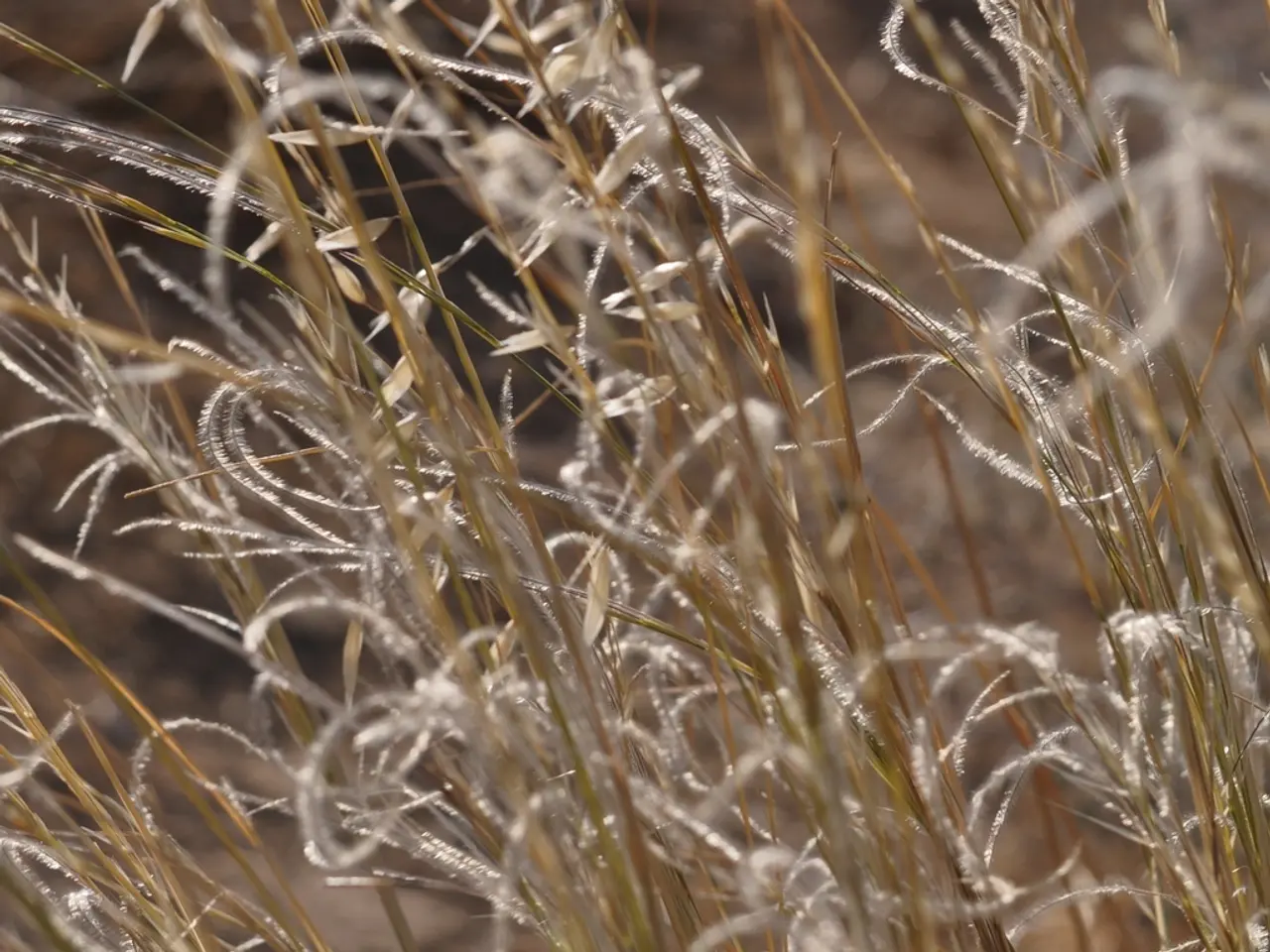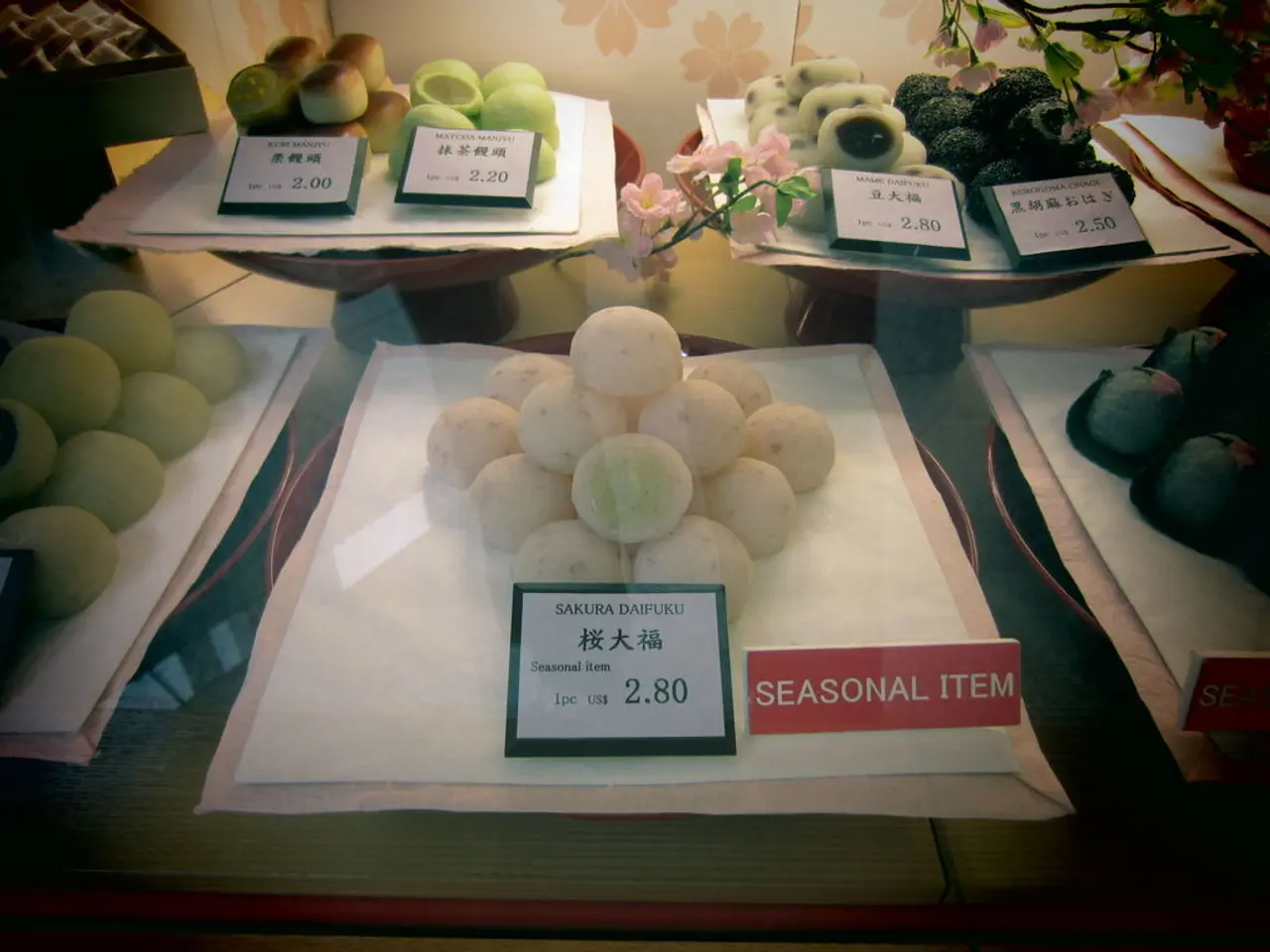Timing Matters: Seasonal Advice for a Vibrant Garden Lawn through Fertilization
In the quest for a lush, green lawn, fertilization plays a crucial role. Here's a guide to help you get started, covering everything from choosing the right fertilizer to the ideal timing for various grass types.
For beginners, a well-balanced starter fertilizer is an excellent choice for kickstarting growth in new lawns. When it comes to established lawns, timing is crucial. While winter is a time for preparing the lawn, focusing on clearing leaves and debris instead of fertilizing, as most grasses are dormant.
As you prepare to fertilize your lawn, consider using a spreader for an even distribution of fertilizer, helping to avoid a patchy appearance. Mowing consistently is also essential, aiming to cut no more than a third of the lawn's height. This encourages deeper root growth and healthier grass.
The ideal time to fertilize a lawn depends on the type of grass and regional climate. For cool-season grasses, such as Kentucky bluegrass, tall fescue, fine fescues, and perennial ryegrass, the best fertilizing times are typically in early to mid-fall and sometimes also in spring when soil temperatures are between about 55°F and 65°F. In contrast, warm-season grasses like Bermuda, Zoysia, St. Augustine, centipede, and bahia, are best fertilized in late spring to early summer and possibly in midsummer and early fall.
More specifically, in regions like Texas, warm-season lawns benefit from fertilizing in spring, optionally midsummer, and fall, with timing adjusted based on local climate zones. In Pennsylvania and similar cooler climates, cool-season lawns may be fertilized about four times between early April and mid-October, timed according to soil temperature rather than exact dates.
Regardless of the season, fertilizing should occur during the grass's active growing phase—not when dormant or stressed from heat or drought—and preferably in the morning or early evening to avoid midday heat stress. Waiting until the grass has been mowed once or twice in spring before fertilizing is also recommended.
When it comes to choosing a fertilizer, granular options offer slow-release nutrients, feeding the lawn over time, while quick-release fertilizers give an instant boost but can lead to overfertilizing. After fertilizing, resist the temptation to mow right away and water the lawn first to help the nutrients settle in.
The main types of fertilizers are granular and liquid, and it's important to choose a fertilizer that lists nitrogen, phosphorus, and potassium. Fertilization is more than just choosing the right products; it also involves applying them correctly and following good aftercare practices.
During fall, applying a fall fertilizer is beneficial for cool-season grasses, building strong roots for winter dormancy.
With this guide, you're now equipped to embark on your lawn care journey, ensuring a beautiful, healthy lawn all year round. Happy fertilizing!
- In addition to fertilizing during the grass's active growing phase, consider expanding your lawn care routines to include home-and-garden activities such as gardening and tending to your home-and-garden plants for a cohesive, lush outdoor lifestyle.
- To further enhance your home's visual appeal, focus on maintaining a routine gardening schedule that includes tasks like planting flowers and shrubs in your home-and-garden to complement your beautifully fertilized and maintained lawn.




